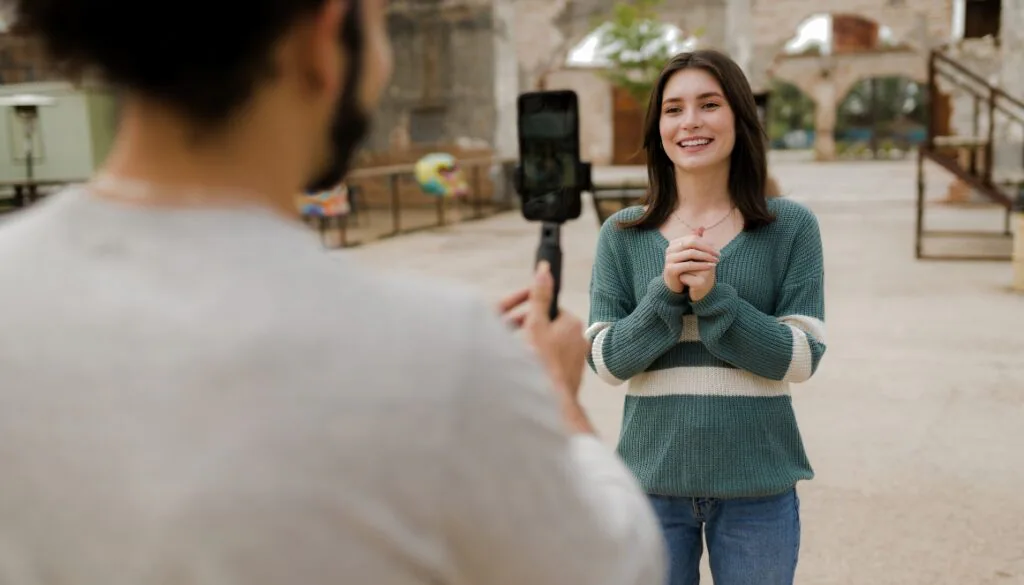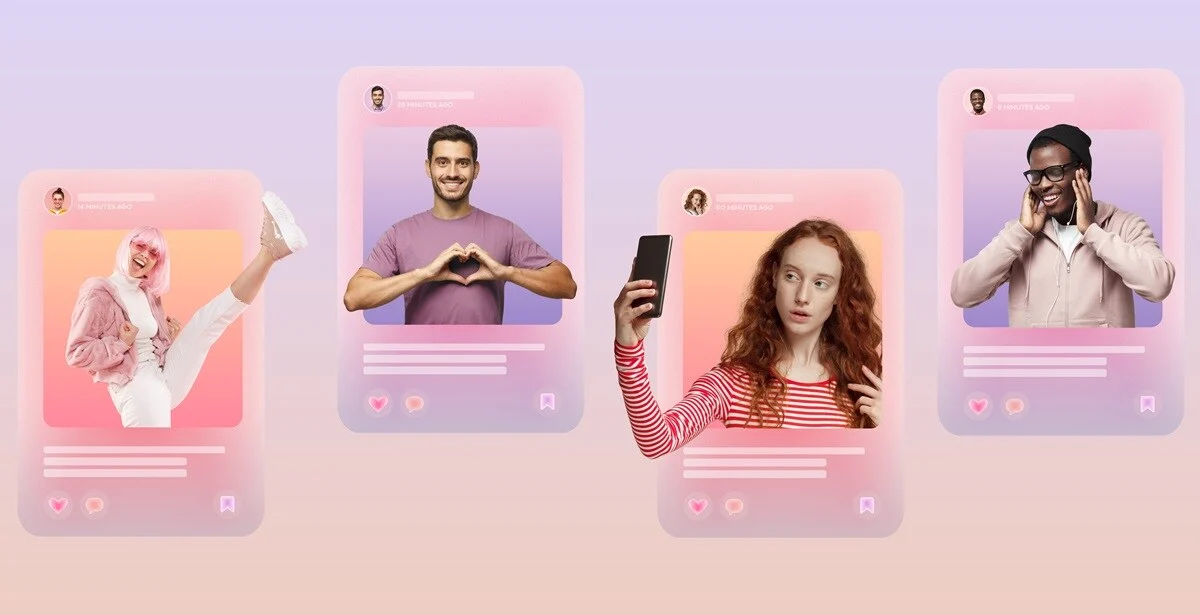In the fast-paced world of fashion marketing, trends come and go at lightning speed. Amongst this whirlwind, a new breed of influencer is capturing attention—micro-influencers. These niche creators may not boast millions of followers like macro stars such as ASOS or Shein, but their impact is undeniable. With authentic interactions and targeted audiences, micro-influencers are changing the game for brands like Sinsay and Revolve.
The secret lies in their ability to connect on a deeper level with their audience. They cultivate genuine relationships built on trust, making them powerful allies for fashion labels eager to make an impression without relying solely on mainstream celebrity endorsements. Let’s dive into how these influencers are generating big results for fashion brands everywhere and why they deserve your attention in today’s digital landscape.
What is a Micro-Influencer and Why They Matter in Fashion Marketing
Micro-influencers are social media personalities with a follower count ranging from 1,000 to 100,000. Unlike macro stars, their audiences are often more engaged and niche-focused. This makes them particularly valuable in fashion marketing.
Their strength lies in authenticity. Micro-influencers foster deeper connections with followers who trust their opinions on products and trends. When they promote a brand like Revolve or Sinsay, it feels personal rather than promotional.
These influencers create content that resonates well within specific communities. Whether it’s sustainable fashion enthusiasts or streetwear lovers, micro-influencers cater to targeted interests that larger brands sometimes overlook.
Moreover, collaboration with micro-influencers can be cost-effective for fashion labels seeking impactful campaigns without breaking the bank. Their influence is growing as consumers increasingly seek relatable figures over unattainable celebrity endorsements—a shift that’s reshaping how brands approach marketing strategies today.
Benefits of Working with Micro-Influencers
Micro-influencers bring authenticity that resonates with their followers. Unlike macro stars, these niche creators often have a more engaged audience who trust their recommendations. This genuine connection can lead to higher conversion rates for fashion brands.
Cost-effectiveness is another significant advantage. Collaborating with micro-influencers typically requires a smaller budget compared to larger influencers or celebrities like those at ASOS or Shein. This allows brands to stretch their marketing dollars further while still reaching a targeted demographic.
Their focused niches enable brands to hone in on specific markets. For example, Sinsay might find success partnering with micro-influencers who cater specifically to young adults interested in trendy streetwear.
Additionally, micro-influencer campaigns can produce diverse content styles and perspectives. With various approaches, they create fresh visuals that stand out on platforms crowded by mainstream fashion advertising from big names like Revolve.
Finding the Right Micro-Influencers for Your Fashion Brand

Identifying the ideal micro-influencers for your fashion brand is key to a successful partnership. Start by defining your target audience. Knowing who you want to reach will guide your search.
Explore platforms like Instagram and TikTok, where niche creators thrive. Look for influencers with follower counts between 1,000 and 100,000; they often have more engaged audiences than macro stars.
Dive deep into their content. Analyze how well they resonate with followers through engagement rates rather than just numbers. Authenticity matters here—choose individuals whose style aligns with your brand’s aesthetic.
Don’t overlook the importance of values and mission alignment. Influencers who genuinely connect with your brand’s ethos can amplify authentic messaging that resonates deeply with consumers.
Reach out personally, showcasing genuine interest in their work. A tailored approach goes a long way in building lasting relationships that benefit both parties involved.
How to Collaborate with Micro-Influencers for Maximum Impact
Collaborating with micro-influencers requires a tailored approach. Start by establishing clear objectives for your campaign. Determine what you aim to achieve—brand awareness, engagement, or sales.
Next, foster authentic relationships. Engage with them on social media before reaching out. This builds rapport and shows genuine interest in their content.
When designing the collaboration, allow creative freedom. Micro-influencers understand their audience best and can tailor messages that resonate deeply.
Provide adequate resources without over-directing the process. Share brand guidelines but let them put their unique spin on it.
Establish communication channels for feedback and adjustments throughout the partnership. This ensures alignment while keeping creativity flowing smoothly during campaigns like those seen with Sinsay or ASOS collaborations.
Case Studies: Successful Campaigns with Micro-Influencers in the Fashion Industry
Fashion brands like ASOS and Shein have successfully harnessed the power of micro-influencers to reach niche audiences. A targeted campaign featuring local creators can yield impressive engagement rates.
For example, Revolve partnered with micro-influencers who shared authentic content showcasing their products in everyday settings. The result? A boost in brand affinity and measurable sales increases from followers eager to mimic that lifestyle.
Sinsay also tapped into this trend by collaborating with fashionistas who embody their casual yet trendy aesthetic. This approach not only amplified visibility but fostered a community around the brand’s offerings.
These case studies illustrate how working with niche creators produces genuine connections, driving conversions beyond traditional marketing tactics. Each success story highlights the transforming impact of personalized storytelling through relatable influencers within the crowded fashion landscape.
Measuring ROI and Success Metrics with Micro-Influencer Partnerships
Measuring the ROI of micro-influencer partnerships can be a game changer for fashion brands. Unlike macro stars, niche creators often have highly engaged audiences that translate to authentic interactions.
Start by tracking engagement metrics such as likes, comments, and shares on your posts featuring these influencers. These numbers provide insight into how well their followers connect with your brand.
Another key metric is referral traffic. Utilize unique discount codes or affiliate links to see how many customers are driven directly from micro-influencers’ content.
It’s also essential to monitor conversion rates. This helps determine if the audience not only engages but also makes purchases based on influencer recommendations.
Consider sentiment analysis through customer feedback or social listening tools. Understanding how consumers perceive your brand after an influencer campaign can reveal deeper insights beyond just numbers.
The Future of Micro-Influencer Marketing in Fashion Industry
The landscape of fashion marketing is evolving, and micro-influencers are at the forefront of this change. Brands like Sinsay, ASOS, Shein, and Revolve have already started to capitalize on the unique advantages that these niche creators offer. This shift from traditional advertising to more personalized marketing strategies is not just a trend; it’s becoming a necessity.
As consumers increasingly seek authenticity in online interactions, micro-influencers provide an effective bridge between brands and audiences. Their smaller follower counts may seem insignificant when compared to macro stars, but their engagement rates often far exceed those of bigger names. Followers trust them because they appear relatable and genuine.
Looking ahead, expect to see more fashion brands investing in long-term partnerships with micro-influencers rather than one-off campaigns. These collaborations can foster deeper connections with target demographics while enhancing brand loyalty among younger consumers who value realness over perfection.
Additionally, advancements in technology will make it easier for brands to identify suitable influencers based on analytics rather than gut feelings alone. The rise of data-driven decision-making means that aligning with the right micro-influencer has never been easier or more precise.
As new platforms emerge and consumer preferences continue shifting toward authentic content experiences, the role of niche creators will only become more prominent within the industry. Fashion brands must adapt quickly if they want to stay relevant and keep up with this dynamic environment where relationships matter as much as products do.
Micro-influencer marketing isn’t simply another tactic; it’s reshaping how fashion communicates its message today—and tomorrow promises even greater shifts in this exciting space.




